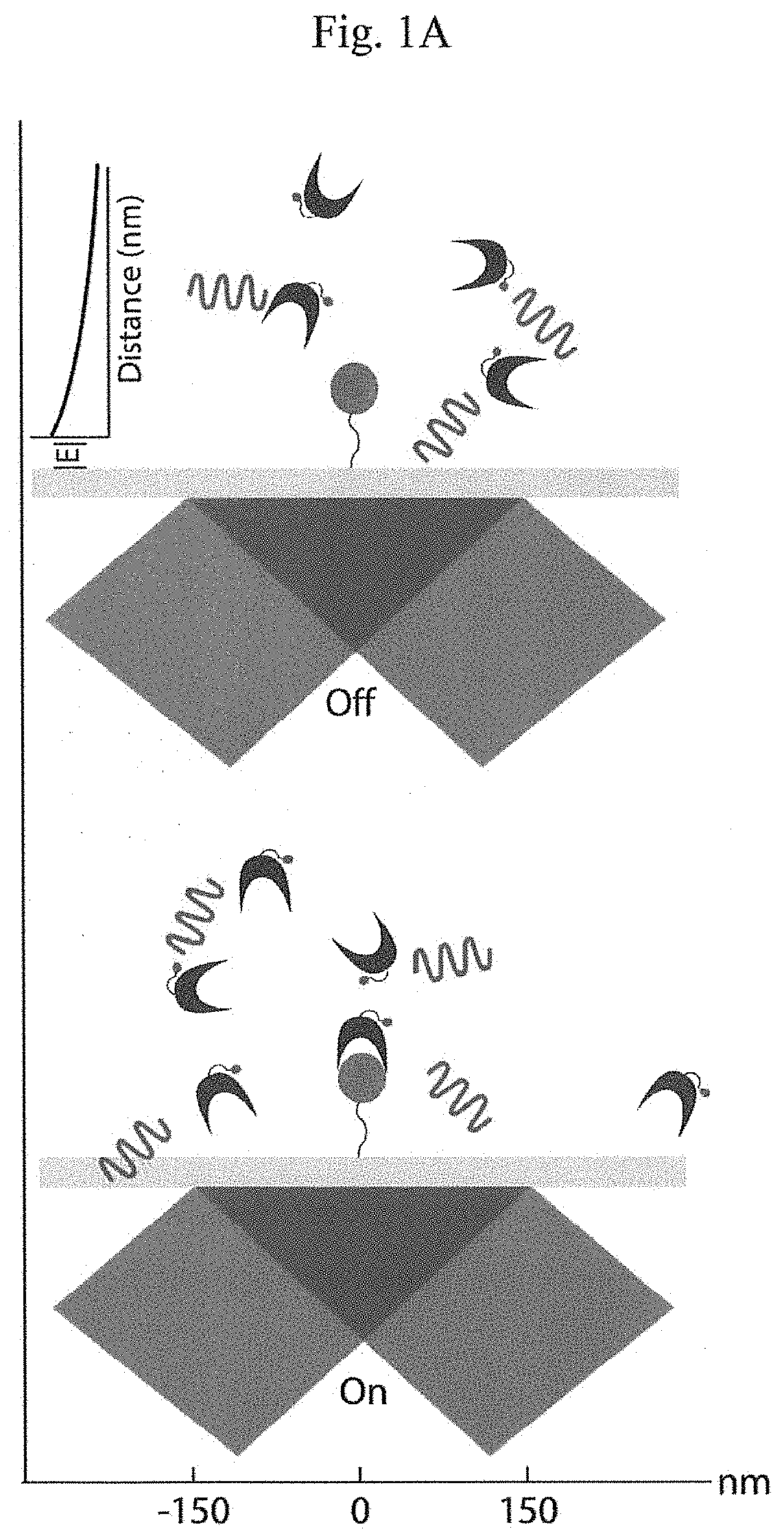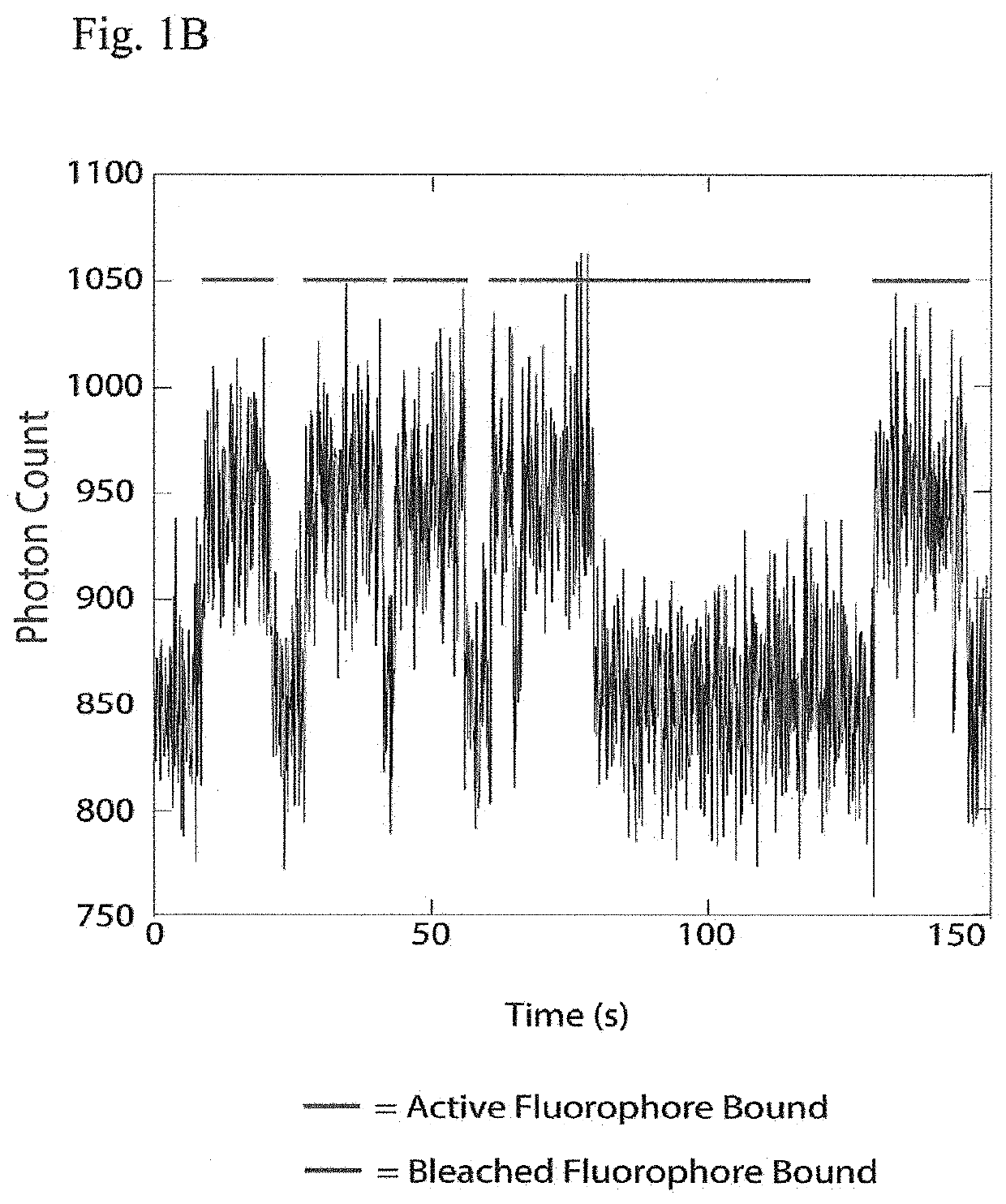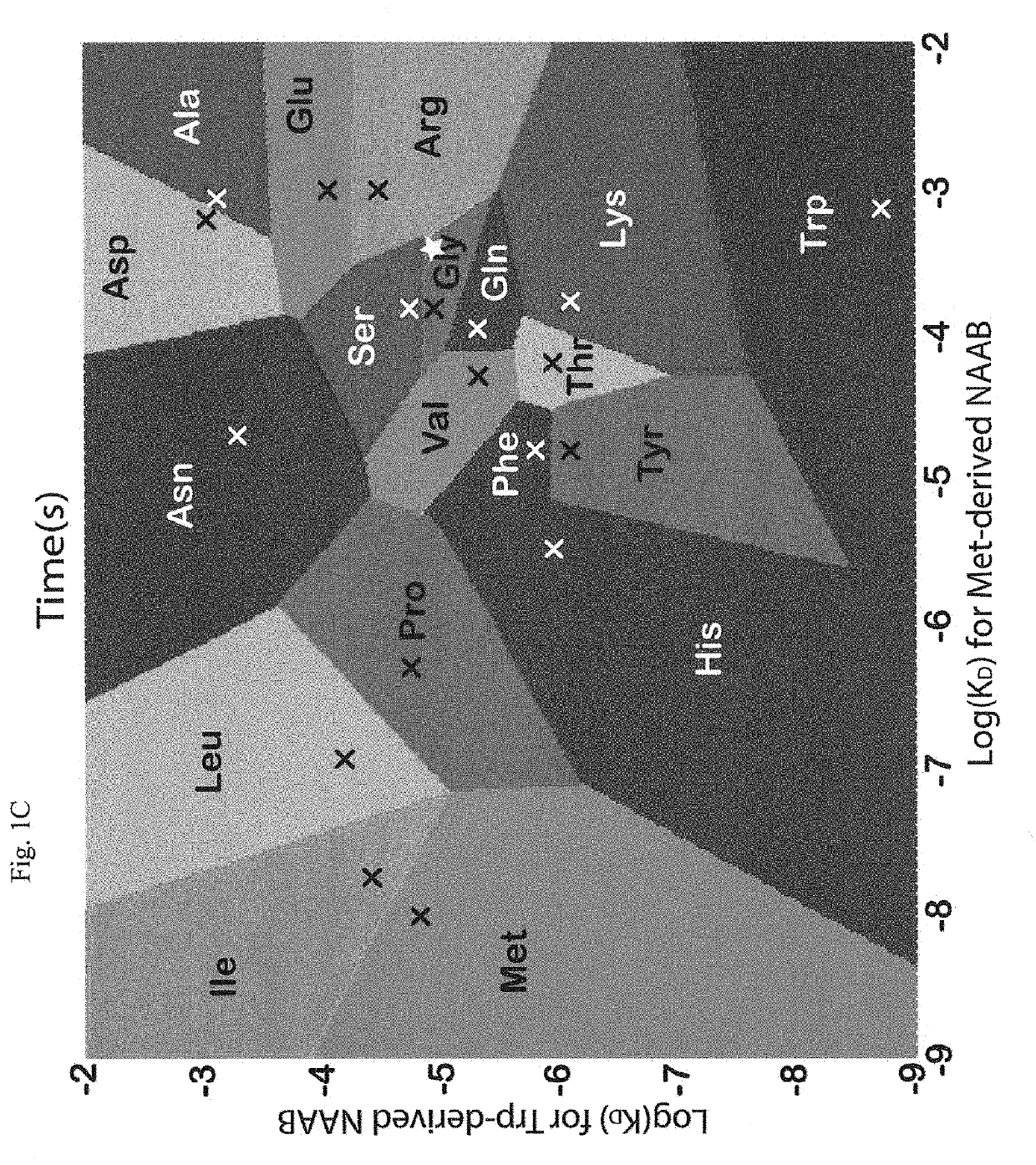Single molecule peptide sequencing methods
a single-molecule, polypeptide technology, applied in the direction of fluorescence/phosphorescence, material analysis through optical means, instruments, etc., can solve the problems of inability to read the identity of every amino acid along the chain, inability to compare massively parallel sequencing of proteins, and finite efficiency
- Summary
- Abstract
- Description
- Claims
- Application Information
AI Technical Summary
Benefits of technology
Problems solved by technology
Method used
Image
Examples
Embodiment Construction
"d_n">[0015]Instead of attempting to improve properties of N-terminal-specific amino-acid binders (NAABs), a strategy has now been determined, referred to herein as “spectral sequencing” that avoids limitations of existing NAABs and enables single molecule protein sequencing without a need to design or develop novel binding reagents. Spectral sequencing measures the affinities of many low-affinity, relatively non-specific NAABs, collectively determining a “spectrum” or “profile” of affinity across binders, for each of the N-terminal amino acids. This profile is sufficient to determine the identity of the N-terminal amino acid. Thus, rather than requiring individual binders to be specific in and of themselves, methods of the invention can be used to infer a specific profile by combining measurements of many non-specific interactions. The spectral sequencing approach of the invention measures the single molecule binding kinetics in a massively parallel fashion, using a generalization ...
PUM
| Property | Measurement | Unit |
|---|---|---|
| luminescent | aaaaa | aaaaa |
| fluorescent | aaaaa | aaaaa |
| affinity | aaaaa | aaaaa |
Abstract
Description
Claims
Application Information
 Login to View More
Login to View More - R&D
- Intellectual Property
- Life Sciences
- Materials
- Tech Scout
- Unparalleled Data Quality
- Higher Quality Content
- 60% Fewer Hallucinations
Browse by: Latest US Patents, China's latest patents, Technical Efficacy Thesaurus, Application Domain, Technology Topic, Popular Technical Reports.
© 2025 PatSnap. All rights reserved.Legal|Privacy policy|Modern Slavery Act Transparency Statement|Sitemap|About US| Contact US: help@patsnap.com



